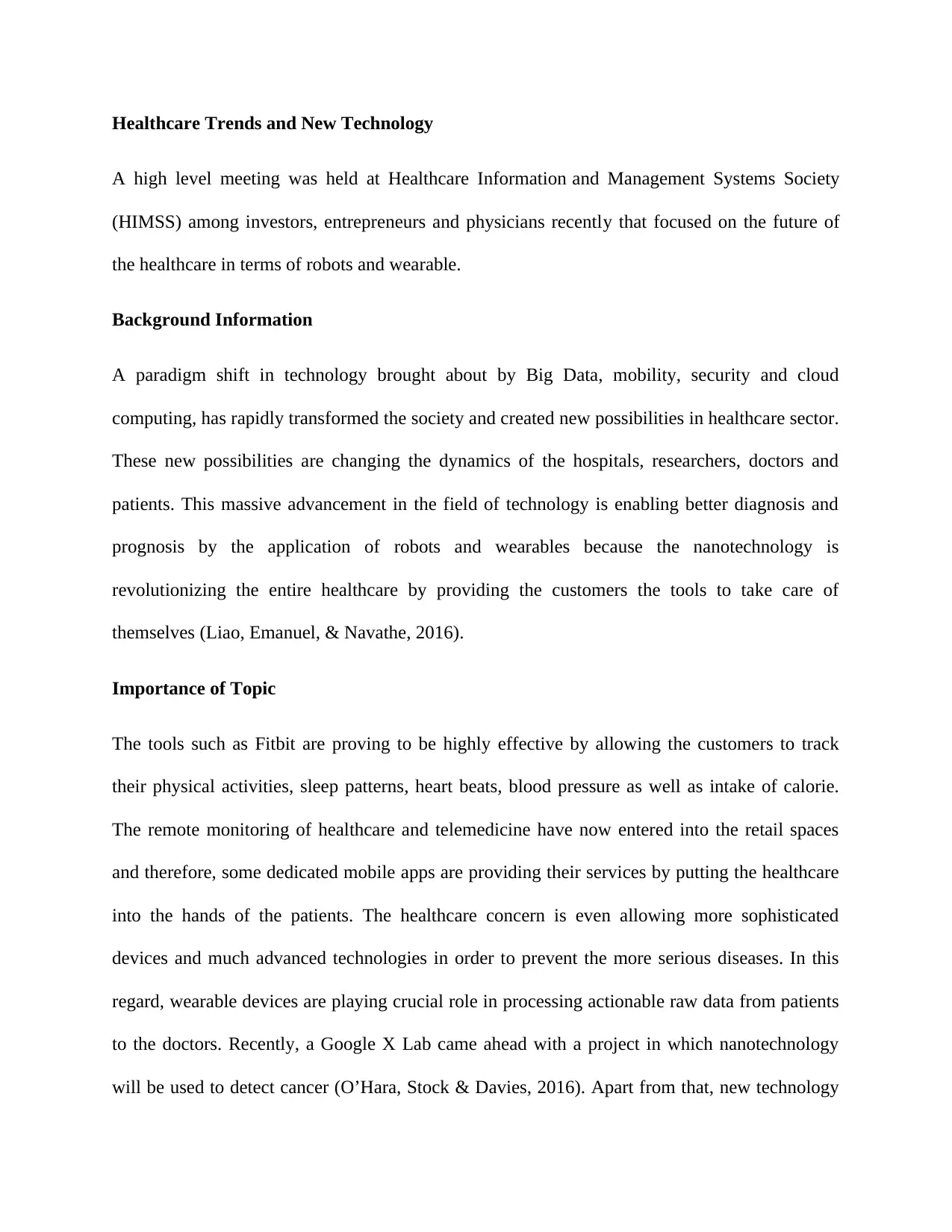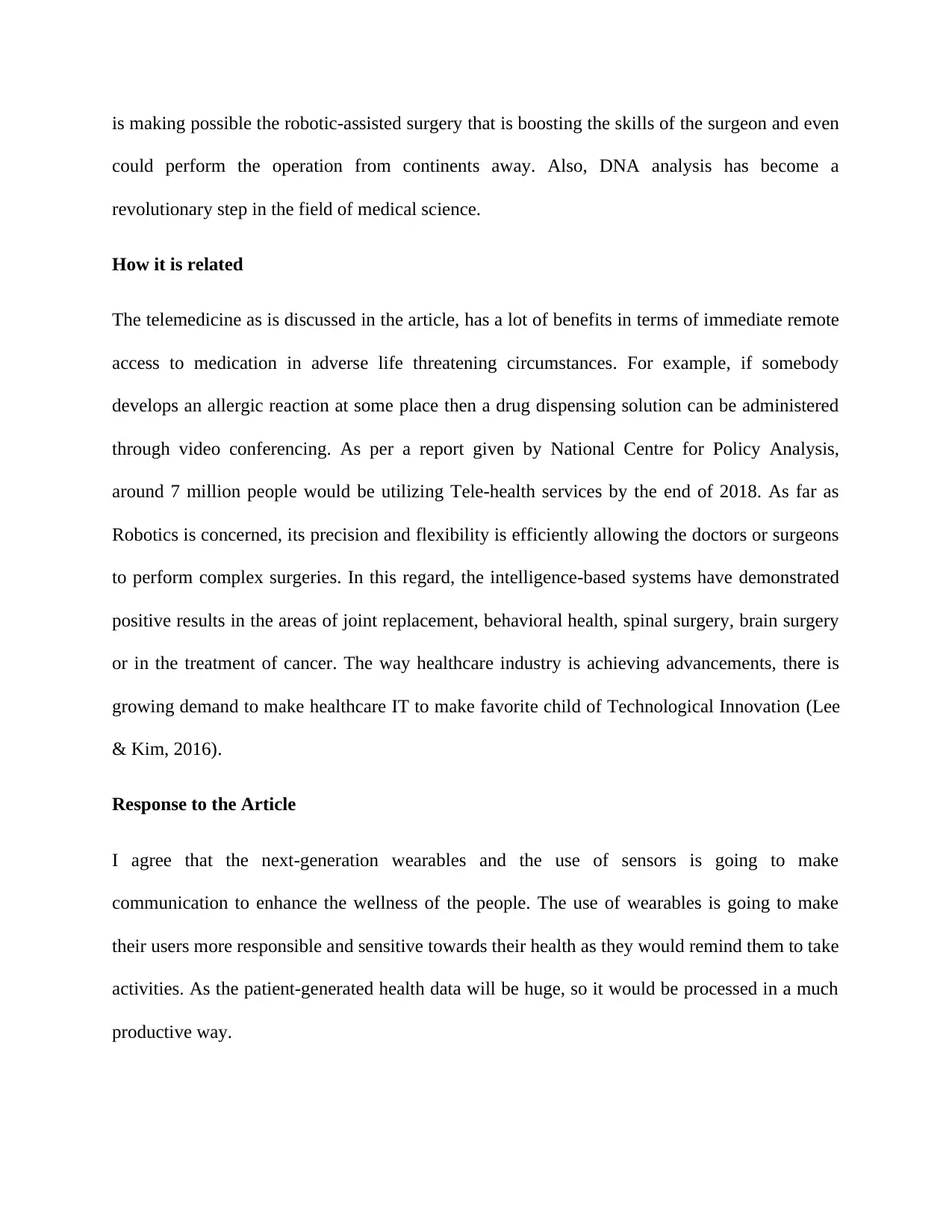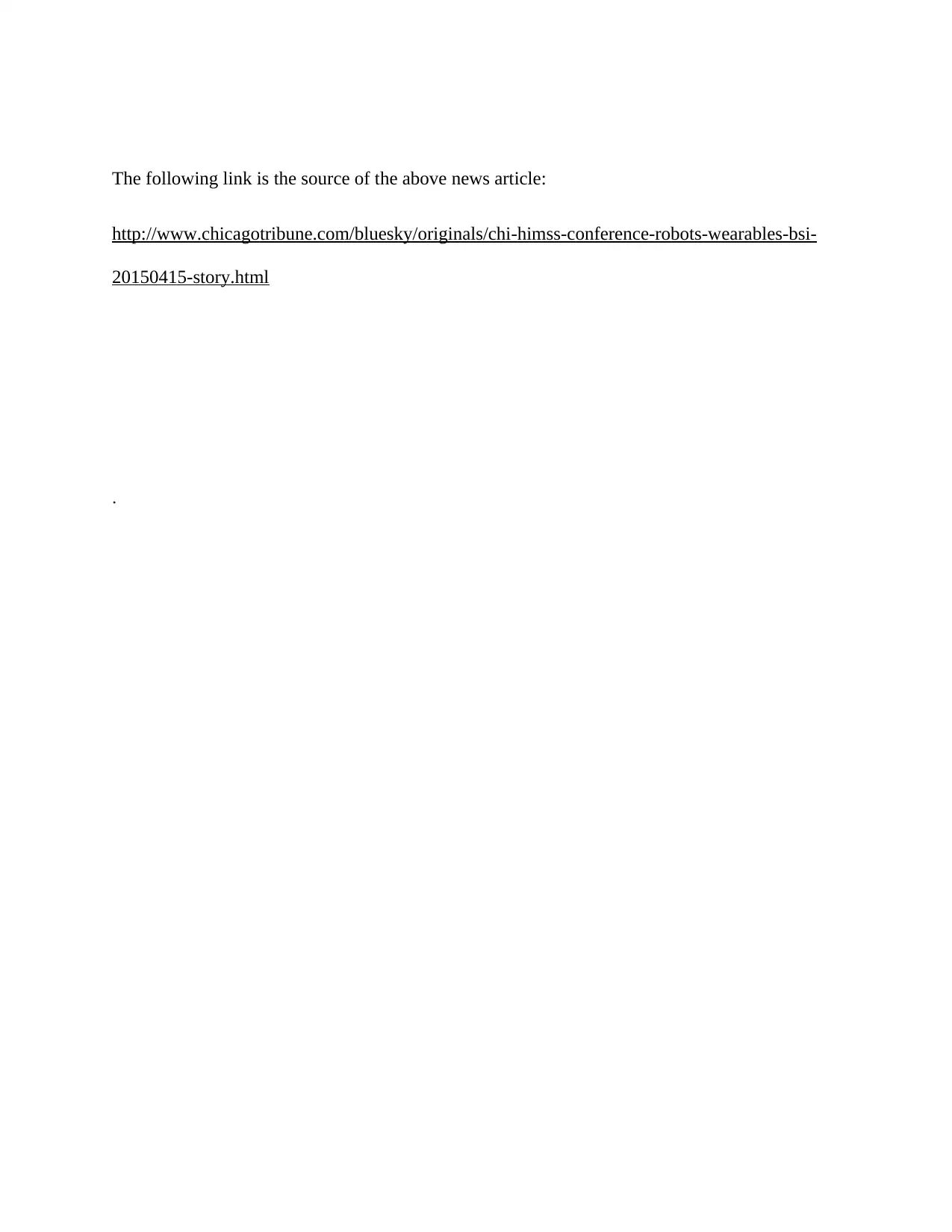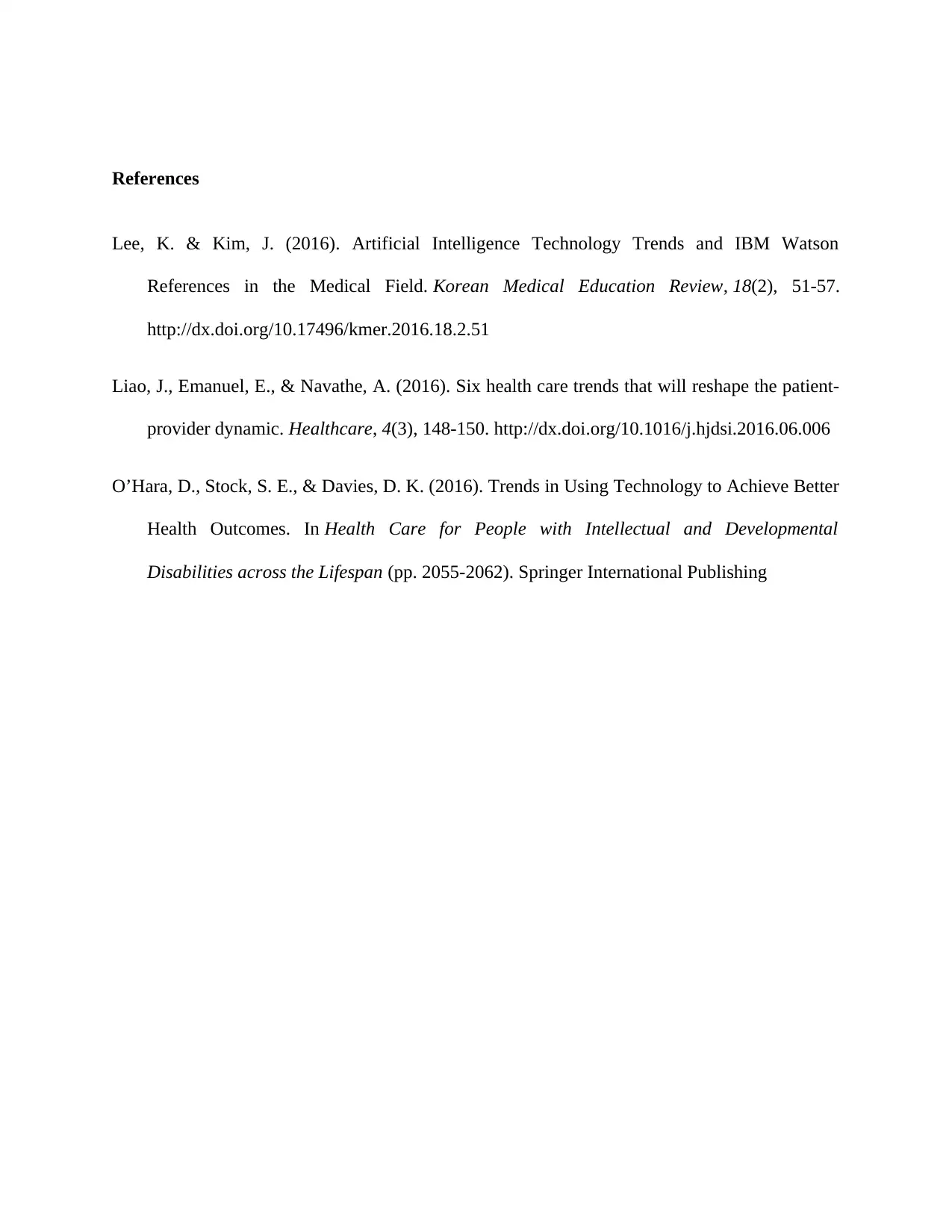Analysis of Healthcare Trends and New Technology in Healthcare
VerifiedAdded on 2019/10/18
|4
|731
|402
Report
AI Summary
This report examines the evolving landscape of healthcare, focusing on the impact of new technologies such as robotics and wearable devices. It highlights the paradigm shift driven by advancements in big data, mobility, and cloud computing, which are changing the dynamics between hospitals, researchers, doctors, and patients. The report discusses the effectiveness of tools like Fitbits in tracking patient health metrics and the rise of telemedicine, offering remote access to medication and healthcare services. It also explores the role of robotics in surgery and the potential of nanotechnology in cancer detection. The report emphasizes the increasing demand for healthcare IT and the importance of next-generation wearables in enhancing patient wellness and providing valuable health data. The analysis references a HIMSS meeting that focused on the future of healthcare in terms of robots and wearables, along with several academic sources that support the discussed trends and technologies.
1 out of 4











![[object Object]](/_next/static/media/star-bottom.7253800d.svg)